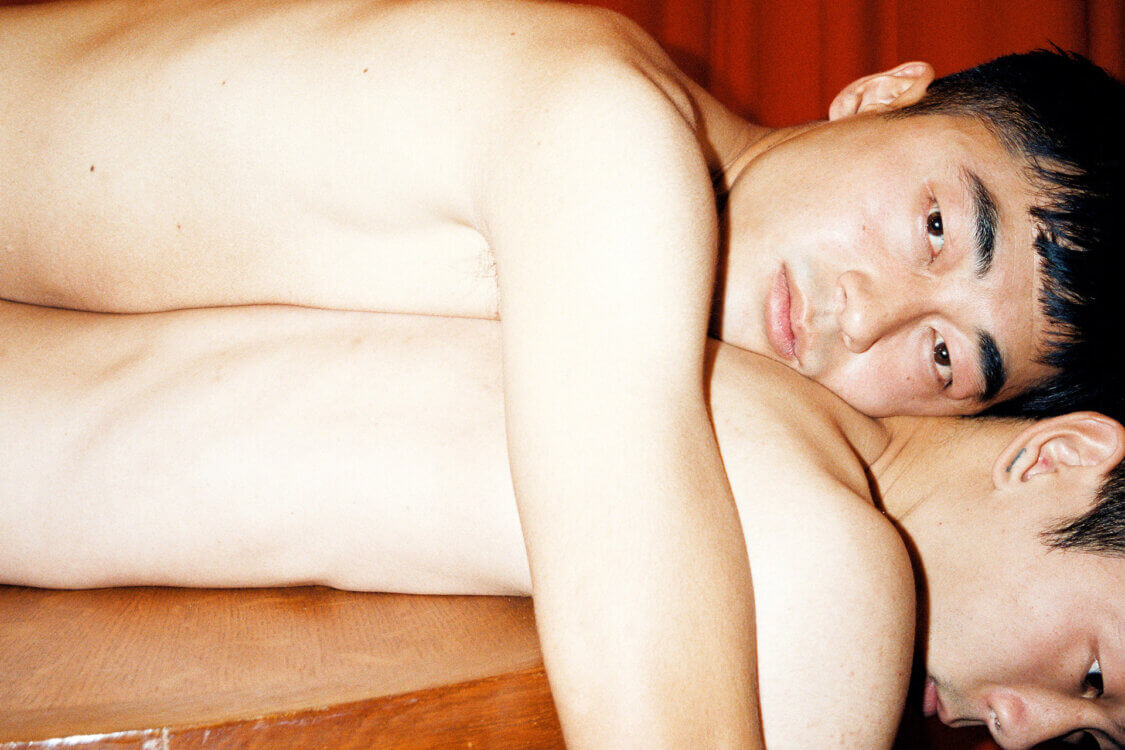GF
REN HANG 任航
b. 1987, Changchun, Jilin d. 2017
Untitled, 2012
digital C-type print
Ren Hang’s photographs celebrated spontaneity and nudity in a culture that tends to disapprove of both. “We were born nude; I just photographed things in their more natural conditions,” he explains. His models were friends or admirers whom he posed, usually indoors, with a minimum of planning. Deadpan expressions, flat backdrops and startling colour contrasts add to the images’ surreal playfulness: the artist, who took up photography to relieve chronic depression, said he would never continue a shoot unless everyone was having fun.
XIA HAN 夏瀚
b. 1993, Shanghai
Humiliation, 2022-23
inflatable figure, digital animation, open source handheld game consoles, plastic toy hand
Xia Han grew up playing video games on his Game Boy Advance, PC, and PlayStation 3. Over time, he realised how life has become increasingly gamified—from workplace rewards to body customisation. His installation Humiliation critiques this shift, featuring a large inflatable model of a naked lower body, looping videos on game consoles, and a toy finger. “You can think of the inflatable model as representing power, while the little finger symbolises the small individual,” says Xia. The work confronts the pervasiveness of digital power dynamics and highlights the aggressive nature of online violence.
Less is More, 2023
dual channel video installation (colour, sound), 3D printed plastic, acrylic paint
video 3 min 25 sec
Bitch Boy, 2023
acrylic on canvas
Xia Han believes “that gaming has profoundly shaped the mindset of my generation.” He explores the sexualisation of female characters and gender representation in games through his works Less is More and Bitch Boy. The artist observed how, in many commercial video games aimed at male consumers, female characters gain stronger defence stats as their armour becomes more revealing. Yet, he also noted how male players frequently choose to play as female avatars in these games. Using tech to question tech, Xia examines gender, identity, and the pressure of societal roles.
SHANG LIANG 商亮
b. 1981, Beijing
Boxing Man No.7, 2019
oil on canvas
Boxing Man No.4, 2019
oil on canvas
Exaggerated, larger-than-life muscles burst from the frame of Shang Liang’s surreal paintings of masculinity. Her early works, inspired by adolescence, feature teenage boys with overdeveloped muscles—straining, yearning to become powerful men. In her newer Boxing Man series, these figures evolve into monstrous forms, their strength both absurd and menacing. Their anatomy dissolves entirely: heads are replaced with boxing gloves, suggesting a bizarre mutation. “It’s a new species,” Shang says. Her work critiques traditional masculinity—its construction, contradictions, and dominance within society.
